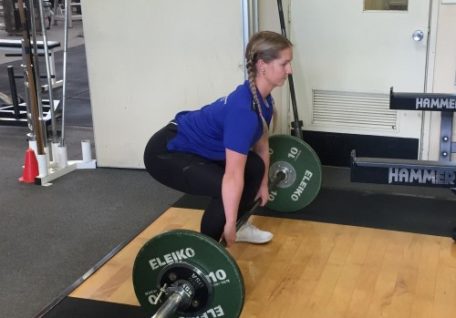When designing a resistance training program for either yourself or clients, there are many considerations that need be taken into account before you hit the gym. Broadly speaking, there are three key components to program design: Environmental factors, needs analysis and program variables/training guidelines. It’s important to identify and consider the elements involved in each of the components to ensure for an effective training session and overall program.
Let’s take a closer look at these components:
Environmental Factors:
This includes external factors such as equipment availability, time of day, time available to train and number of participants. While these might seem like obvious considerations, they are important as they will have an impact on what types of exercises you can include in your program and how many exercises you can perform.
 Needs Analysis:
Needs Analysis:
A needs analysis is a way to gather specific information about your client to allow for an individualised program to be created. If you are creating a program for yourself, a needs analysis is still important and will help you select the appropriate exercises, sets and reps to meet your fitness goals. The information that should be considered in the needs analysis includes:
- Goals
- Age
- Gender
- Experience/Fitness level
- Injuries/Health factors
Program Variables/Training Guidelines:
After determining what environmental factors exist and analysing the internal influences involved, the process of actually writing the exercise program can begin. This process can be broken down into the following:
- Exercise Choice
It is important to balance out development of all muscle groups, and as a general rule programs should consist of exercises that include legs, upper body push, upper body pull and core. It is also recommended to make the exercises ‘functional’, which means they assist in preparing the body for everyday activities.
- Exercise Order
Train larger muscles first, and then move to smaller muscles. This will see compound exercises performed at the beginning of the session and isolated exercises toward the end.
- Number of Reps
There should be an inverse relationship between weight and the number of repetitions. That is, as the weight increases, the number of reps should decrease, and vice versa. Specific training goals are also important to consider, e.g. 1-6 reps for power and strength goals, 8-12 reps for general strength and 15+ reps for endurance.
- Intensity/Load
Rate of perceived exertion (RPE) is a self-quantified measure of intensity for an activity and should be used to understand load.
- Number of Sets
There should be an inverse relationship between the number of sets and repetitions. That is, a lower number of repetitions should be combined with a higher number of sets, and vice versa. Similarly to number of repetitions, training goals are important to consider when programming how many sets to complete.
- Rest Intervals
Rest time will depend on both training goals and fitness levels. For power and maximal strength goals, longer periods of rest should be taken (3-10 minutes), for general strength between 30 seconds – 2 minutes and for beginners anywhere between 1 and 2 minutes. To minimise the down time between sets you can alternate exercises for different parts of the body, for example, a set of for the legs immediately followed by an upper body exercise.
If you would like to learn more about exercise prescription and programming, check out our Cert III & IV in Fitness and expand your knowledge in this area as well as much more!


 Needs Analysis:
Needs Analysis:








